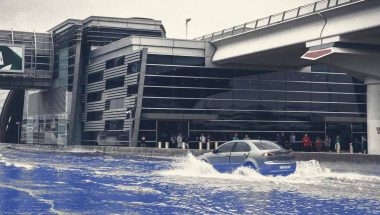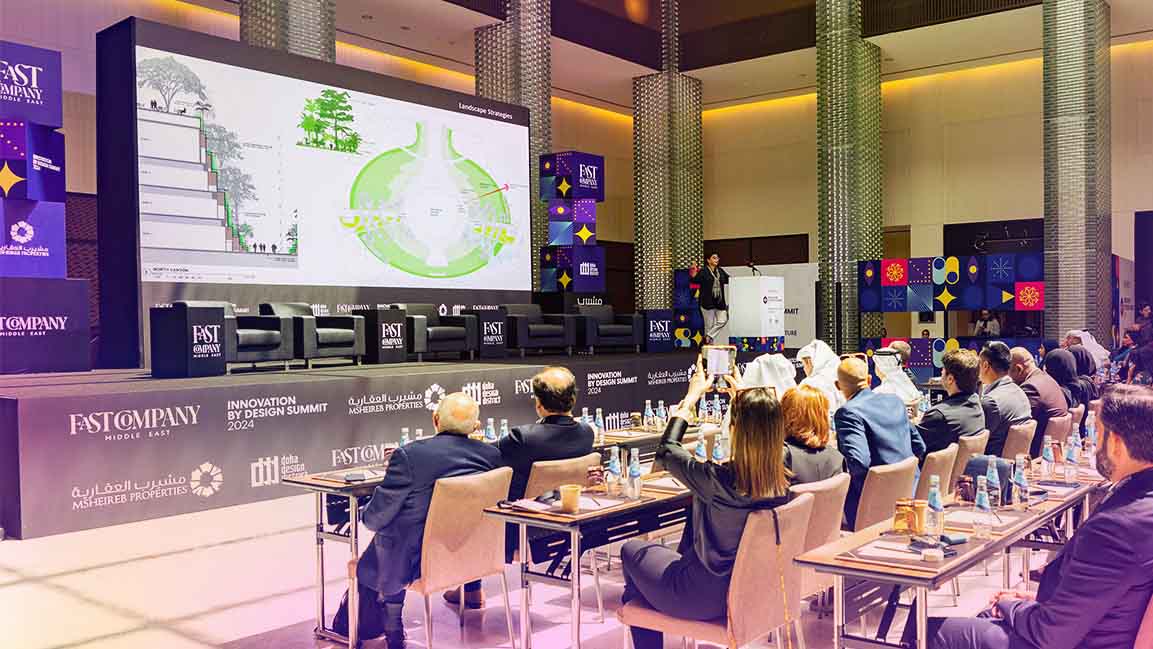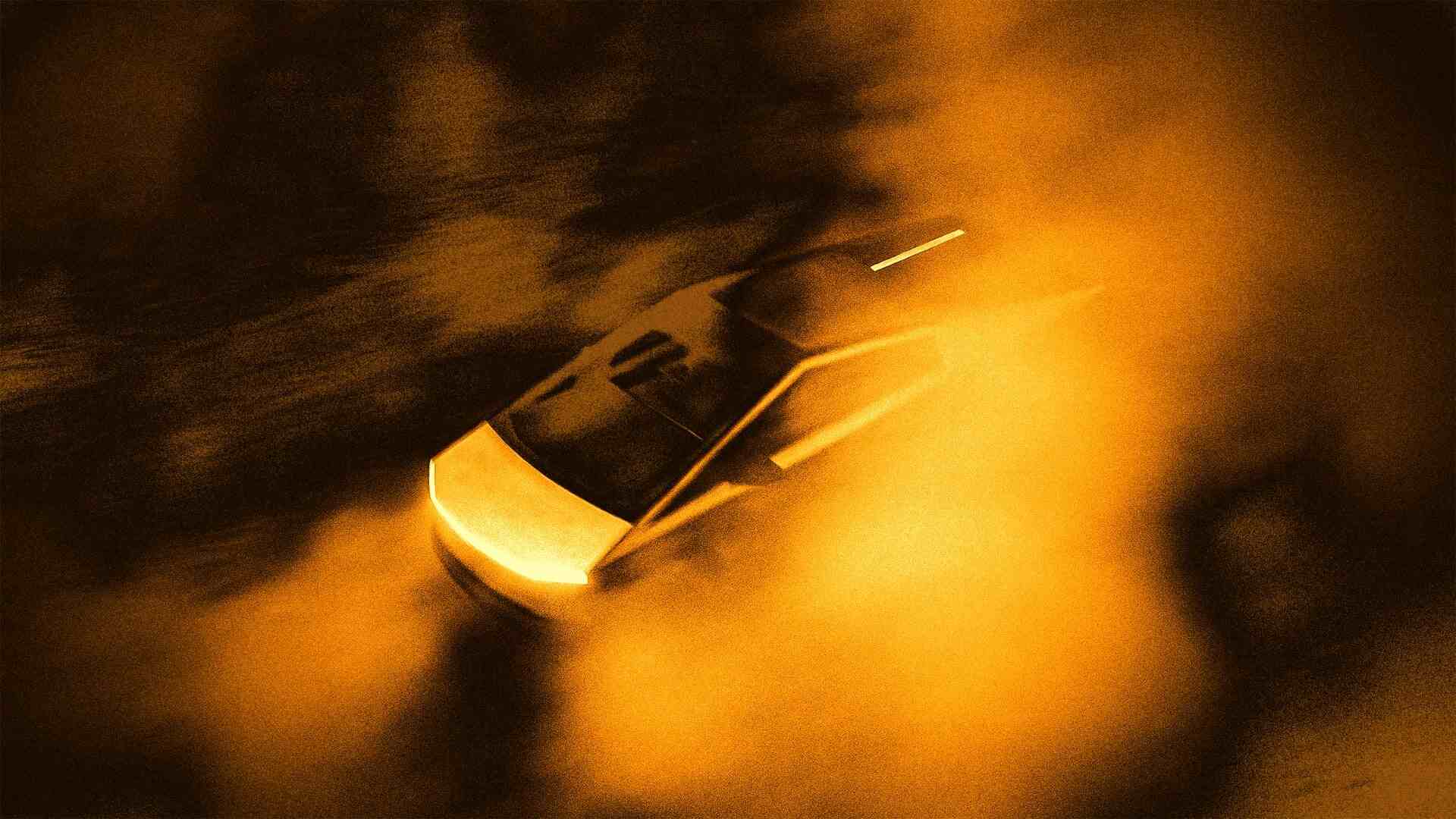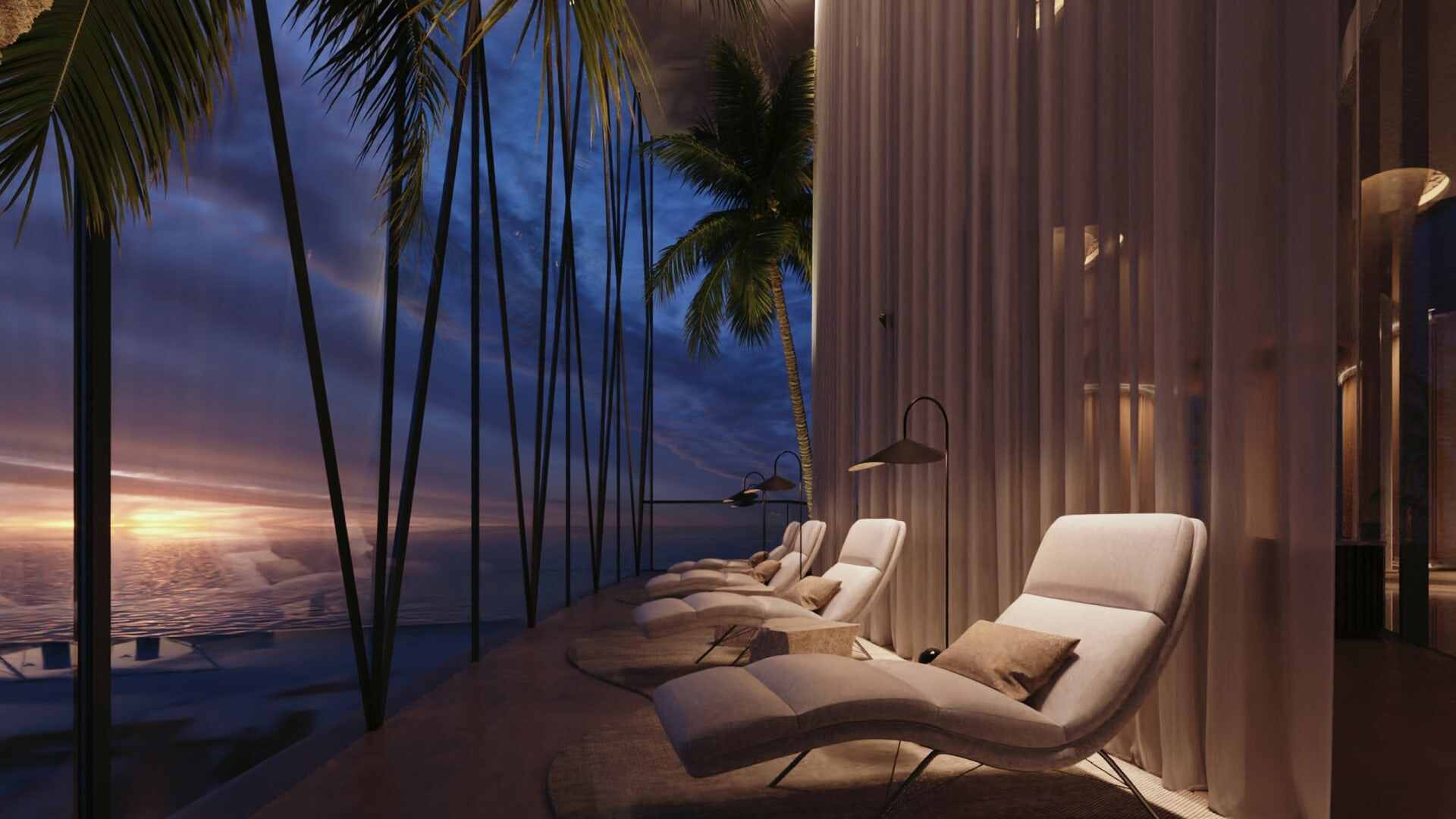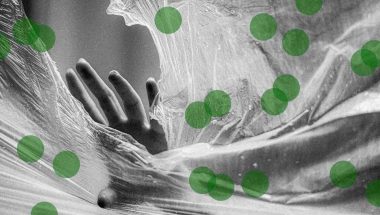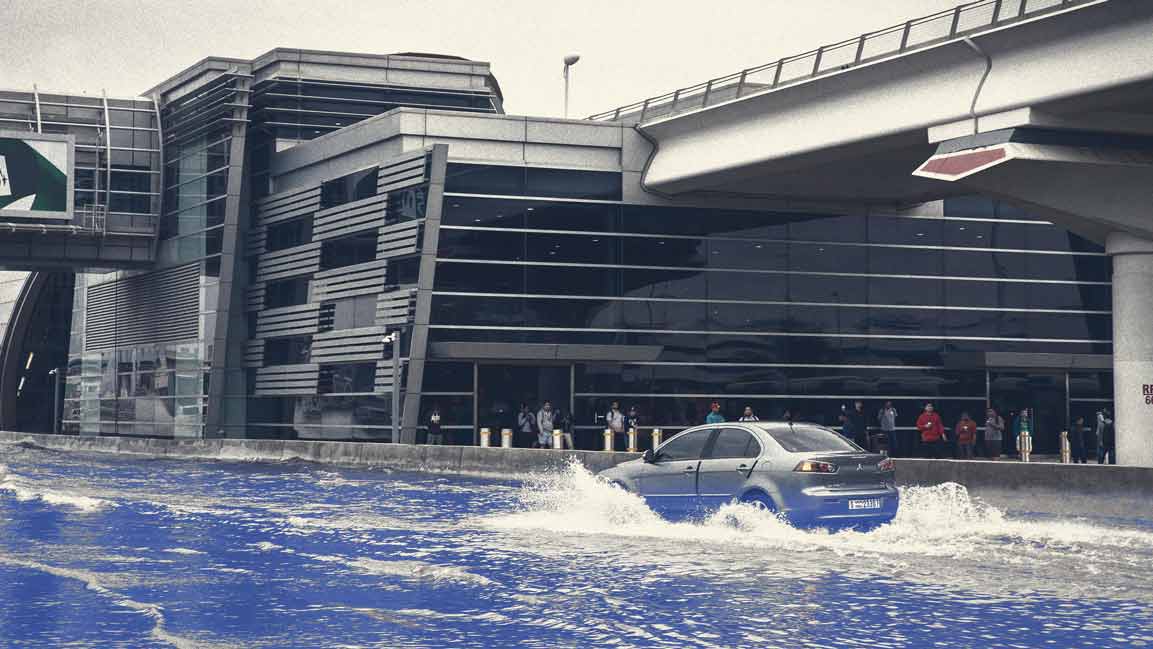- | 8:10 am
The secrets to making a rom-com that pulls your heartstrings

“There are no guilty pleasures. There are only pleasures.” This new mantra of thinking is valid, healthy, and necessary. But it’s also nonsense to anyone who has consensually participated in one key activity: watching a rom-com.
That’s because romantic comedies and their “will they or won’t they (but of course they will!)” stories ooze with familiar tropes. And yet those tropes are exactly what make these films so distinctively rom-commy. We love them for their adorable predictability.
Just in time for Valentine’s Day, Amazon Studios released I Want You Back, a modern rom-com starring Jenny Slate and Charlie Day. Both play characters who have been dumped by the respective love of their life. So they team up, much like the characters in Strangers on a Train, each vowing to help the other get their partner back. But might they actually, unintentionally, fall in love in the process? What? How? Who could possibly know?!?
I Want You Back is a picture-perfect rom-com with twisting plots, saccharine realizations, and loads of banter between Slate and Day. But creating the world of a rom-com—from the sets to the props—is highly specific work, overseen by a production designer. In this case, the job went to Michael Perry. His first break was on The Fabulous Baker Boys, a 1989 rom-com that was nominated for three Academy Awards. In the 30-plus years since, he’s worked on just about every genre you can imagine. (When prepping for I Want You Back, he’d just wrapped eight months of work on the Texas Chainsaw Massacre reboot.)
“My job is to provide a world the script can live in,” Perry says, later adding, “That’s an aesthetic. It’s not my taste.”
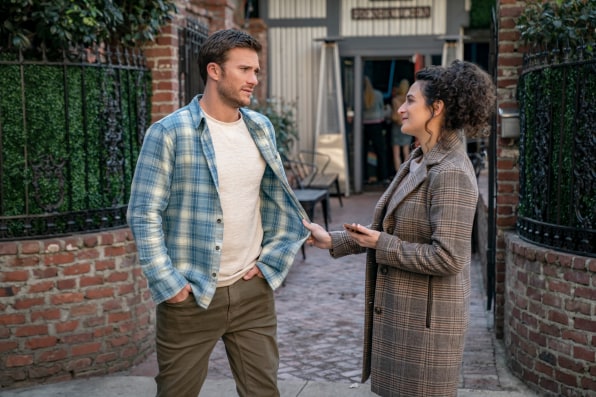
[Photo: © 2021 Amazon Content Services LLC]
FIRST, FALL IN LOVE WITH THE CITY
Key to any rom-com is its setting, a lesson that Perry traces back all the way to The Fabulous Baker Boys, when he worked with production designer Jeffrey Townsend and realized that rom-coms should be shot like documentaries, tracking might-be lovers through their city.
“When you think of [When] Harry Met Sally…, that’s New York. Fabulous Baker Boys, that’s Seattle,” Perry says. For I Want You Back, that city is Atlanta. Perry arrived a few weeks before shooting to take in the Georgia metropolis. “While I’d shot in Atlanta, I’d never really experienced Atlanta as Atlanta. So I flew in [early] . . . and just walked those neighborhoods,” he says. “The hip places they’re eating are hip places that exist. They have a distinctive style of murals—they use pastels for them—and I’ve never seen that before. We even made a couple of murals that way as well.”
While Atlanta served as the backdrop for a series of intertwining love stories in I Want You Back, what made Atlanta—a city that’s also been a backdrop for The Walking Dead—feel romantic?
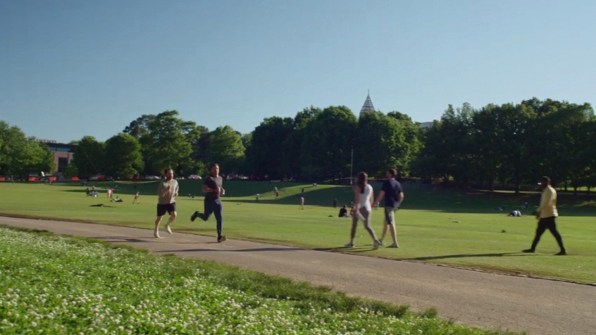
“In a lot of ways, you look at it and go, I could see my girlfriend and I walking down that street, or that’d be a cool little bar to go to,” Perry says. “You take that into consideration because that’s the road you’re going down.”Perry also amplifies and polishes otherwise everyday settings as he preps for filming. Several key scenes take place at a classic diner (another rom-com trope). “The diner, first of all, is charming. But we had to take everything out. You couldn’t get away with it,” Perry says with a laugh. The diner on-screen features a mix of city photos and 1950s vintage signs. It was also, crucially, scrubbed spotless.
“Then we brought in neon, just to give it a distinctive look because no one uses neon anymore,” Perry says. He alludes to a prominent “open” sign and a new neon yellow border the production added to the building, which reflects in the windows to liven up the space.
Often, turning a ho-hum space into a rom-com setting is just about beautification, and cranking up the color. “To keep things sort of rom-commish . . . it’s getting a restaurant that will let me paint it so it’s richer,” Perry says. “I really tried to bring in as rich a color as I could for the things that were romantic.”
Case in point, Slate’s and Day’s characters both live in relatively neutral-colored homes full of beige and gray furnishings. But when they go out together? That’s when the color comes in. (Again, not that they would everrrrr fall for one another.)

[Images: © 2021 Amazon Content Services LLC]
CREATE A COLOR THEME
Color is a useful tool in film, and if you watch any movie closely, you’ll notice that production designers will often give characters, and their spaces, their own particular color palettes.
In the case of I Want You Back, Perry used color to add continuity and heighten the aforementioned romance. “I like to pull two colors and have them in every set or location,” he says, “so that when you look at a movie [every scene is] all part of the same world, because there’s a repeating color palette.”
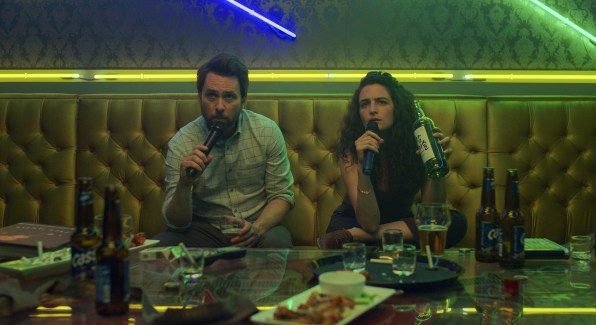
[Photo: © 2021 Amazon Content Services LLC]
Perry traces his color choices back to his initial walks through Atlanta.
“One thing I realized was, they still rely on sodium lamps, which gives the city at night an amber glow. Walking around, it was as if the town was lit by candlelight,” he says. Meanwhile, with 415 public parks, Atlanta is filled with greenery.

[Photo: © 2021 Amazon Content Services LLC]
“It just feels sort of natural and comforting,” Perry says of the landscape. “And everybody looks good in front of a hunter green.”
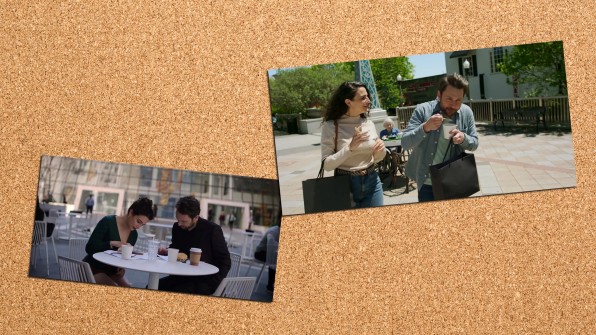
[Images: © 2021 Amazon Content Services LLC]
JUST ADD COFFEE
For years I’ve had a theory: The secret to on-screen romance comes down largely to the cups. Turn on any Hallmark movie in which two people fall in love in Christmastown, or wherever, and you’ll see coffee cups. Disposable paper cups with the cardboard wraps to stop your hands from burning. Ceramic cups placed on saucers. I Want You Back is no different. Just about every scene between Slate and Day has them consuming something in a cup: coffee, wine, coffee, beer, coffee, froyo (not a liquid, okay, but served in a paper cup).
When I ran this theory by Perry, he immediately recognized the trope. “It is actually something we talked about!” he says, before indulging me in his theories about love and on-screen consumption.
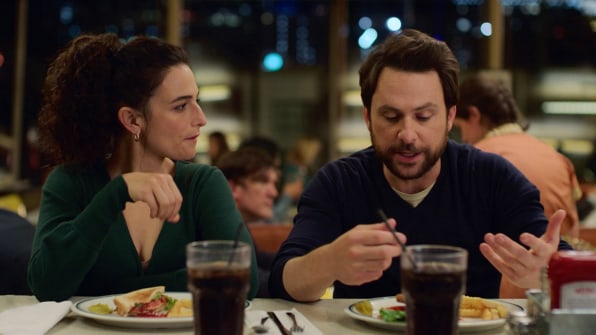
[Photo: © 2021 Amazon Content Services LLC]
“When you’re walking down the street, and there’s a restaurant, and you look in, and some couple is really in love? They have a wineglass, and they’re playing with it when they talk to each other. It’s almost a cliché, but it’s a real image we see a lot in culture,” Perry says. “You go back to Greek statues, they have goblets in their hands. For whatever reason, it just gives the actors a little something to do instead of just throwing their hands around. They can take a moment and drink. But it’s also, even down to Lady and the Tramp, when they’re eating spaghetti? It’s pretty romantic! That kept my prop department on their toes, because you can’t keep giving [actors] the same food, and there’s a lot of eating [in this movie].”
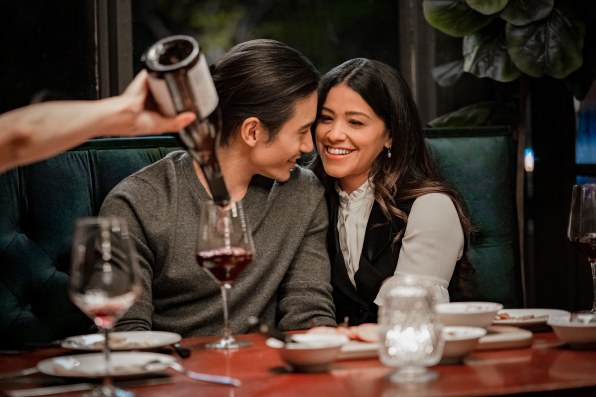
[Photo: © 2021 Amazon Content Services LLC]
It’s enough to make a person wonder, could you take the carefully designed production tropes of a rom-com and apply them to real life? Are we just a few amber sweaters, coffee cups, and neon signs away from kindling romance, enchanting those around us to take a second look at what’s been staring them right in the face all along?“Nooo. No,” Perry says without hesitation when I ask. “But I do think there’s a cultural belief that you can. It’s playing into some underlying feeling that you’re going to meet someone, fall in love, and be with that person forever. And it’s great.”









